Lighting and Power Consumption Characteristics of LED Chicken Laying Egg Lamp
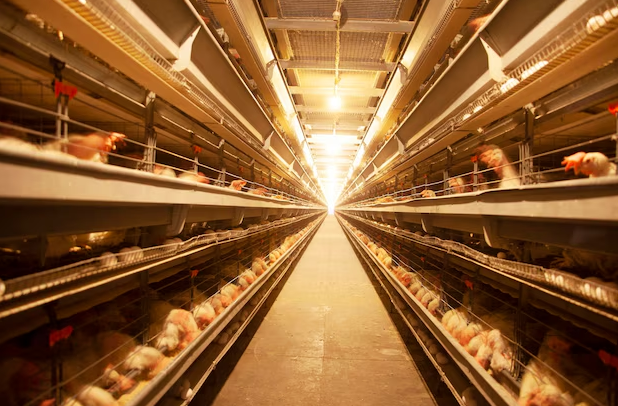
Directory:
1. Materials and Methods
2. Results and Discussion
3. Discussion and Conclusion
4. Ceramiclite Led Chicken Laying Egg Lamp
Laying hens are highly responsive to light, which can influence their egg production by impacting various physiological functions. Too much light can lead to restlessness in the chickens, resulting in issues such as severe pecking, prolapse, and neurosis, while the right amount of light supports their normal growth and development. Consequently, light is considered a crucial environmental factor in the breeding and management of laying hens, particularly during the laying phase, where proper light control is essential.
Incandescent bulbs previously used for lighting laying hens have been phased out. Energy-saving bulbs produce significant heat during the conversion of electricity to light, which reduces their efficiency and shortens their lifespan (1-2 years). In contrast, LED bulbs offer benefits such as lower heat output, higher electro-optical conversion efficiency, and a longer lifespan (around 3 years), making them cleaner and more environmentally friendly than other types of bulbs. This study primarily utilizes LED bulbs as the light source to examine their impact on the production performance of laying hens, comparing them with energy-saving bulbs in terms of energy efficiency and consumption reduction.
1. Materials and Methods
1.1 Test Materials
Test lamps: LED chicken laying egg bulbs (5 W) and energy-saving bulbs (13 W), both emitting yellow-white light.
Test chickens: Hy-Line grey commercial laying hens.
1.2 Test Design
An 80-day feeding experiment was conducted from April 12. 2015. to June 30. 2015. on a farm. The control group was housed in No. 1 laying hen house, which contained 52.796 195-day-old Hy-Line grey laying hens, using 13 W energy-saving bulbs throughout the experiment. The test group was in No. 5 laying hen house, with 52.697 208-day-old Hy-Line grey laying hens, using 13 W energy-saving bulbs for the first 40 days and switching to 5 W LED bulbs for the remaining 40 days. The lighting schedule was set for 16 hours daily (from 4:30 am to 8:30 pm), with six rows of lights in each building, spaced two meters apart, and alternating heights of 1.75 m and 2.35 m from the ground. Each building was equipped with 330 lights and had an electric meter to monitor actual power consumption.
1.3 Daily Management
Four-layer H-type cages were utilized, with six chickens per cage, evenly distributed across each layer. Feeding occurred three times daily at 5:30 am, 11:00 am, and 6:30 pm, allowing the chickens free access to food and water. Eggs were collected twice a day. The caretakers of chicken houses No. 1 and No. 5 recorded daily feed consumption, egg production, and chicken mortality, calculating the average daily feed intake, egg production rate, and mortality rate.
1.4 Light Intensity Measurement
Five locations were chosen to assess the light intensity across the four levels of the H-type chicken cage. The measurements were taken between two lamps near the cage entrance, where the chickens could experience the light.
1.5 Data Analysis
The experimental results were presented as mean ± standard error (x ± SE, n = 8), and a variance analysis was conducted.
2. Results and Discussion
2.1 Light Intensity
The results of the light intensity tests (Table 1) indicate that the second and third layers exhibit stronger light intensity when using energy-saving lamps. The light intensity at the second and third layers with LED chicken laying egg lamps is comparable to that of energy-saving lamps; however, the fourth layer shows even greater intensity. Additionally, the light intensity across the second, third, and fourth layers is more consistent, with LED lamps providing significantly higher intensity than energy-saving lamps (P < 0.05). This suggests that LED lamps offer superior lighting performance.
table1 Energy-saving lamps and LED chicken laying egg light intensity test results
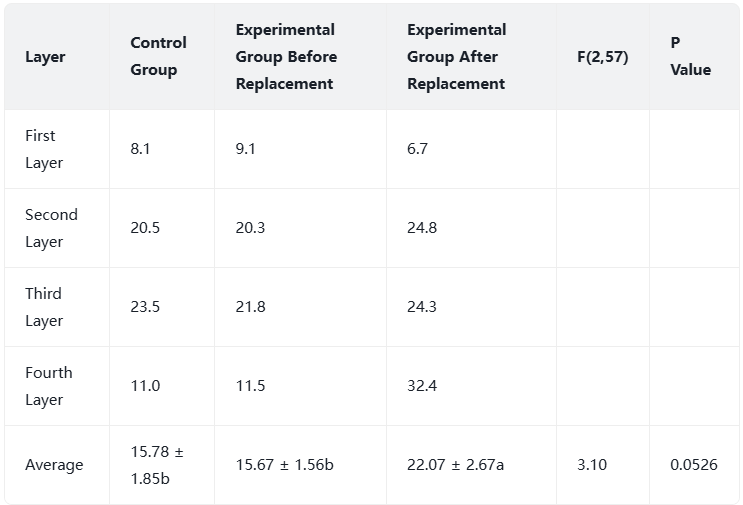
2.2 Production Performance
Table 2 indicates that there are no notable differences in average daily feed intake, mortality rates, or egg production rates between the two groups (P>0.05).
table2 Energy-saving lamp group and LED chicken laying egg lamp group production performance after 40 days
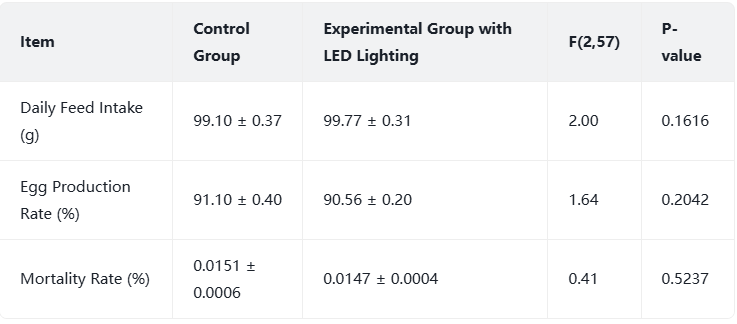
2.3 Cost and Energy Usage
Table 3 shows that in a closed chicken house housing over 40,000 laying hens, the initial purchase cost of LED chicken laying egg lamps is roughly equivalent to that of energy-saving lamps after three years, assuming the lights are used for 16 hours daily. Meter readings indicate that energy-saving lamps consume an average of 45.00 kW • h per day, while LEDs use only 19.60 kW • h daily. Statistical analysis reveals a significant difference, with F(2.57) = 1.916.32 and a p-value < 0.0001. indicating a highly significant difference. At a rate of 0.7 yuan/(kW • h), LED chicken laying egg lamps can lead to savings of 19,469.1 yuan in electricity costs over three years, demonstrating that LED lamps can greatly reduce energy expenses.
table3 Purchase cost
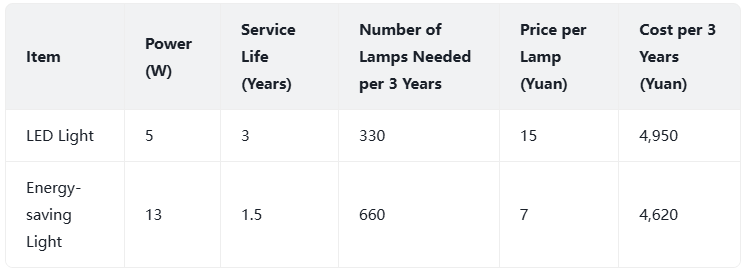
3. Discussion and Conclusion
This experimental research indicates that 5 W LED chicken laying egg lamps provide superior lighting effects compared to 13 W energy-saving lamps, while having comparable purchase prices. Additionally, they can lead to a notable reduction in electricity expenses associated with lighting, aligning with the findings of Wei et al. The egg production rate in the experimental group experienced a slight decline, which contrasts with the findings of Liu et al. This discrepancy may be attributed to the fact that the introduction of LED lamps in this study caused some level of stimulation in the chickens, although the difference was not significant.
4. Ceramiclite Led Chicken Laying Egg Lamp

4.2 Poultry Light T5
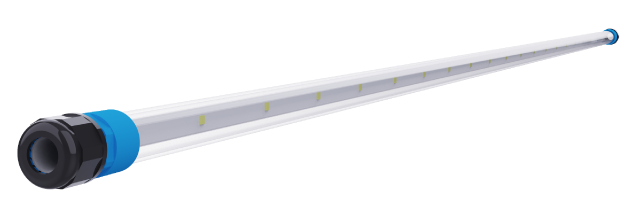
4.3 Poultry Light T8

5. Related Solution & Science
6. Related Blog
Poultry Farm Lighting: Characteristics of Lighting for Poultry Farm
Application of Led Light for Chickens Lighting
Broiler Lighting: Best Light for Chicken Brooder
Poultry House Lighting: Red/blue Light for Chicken Coop